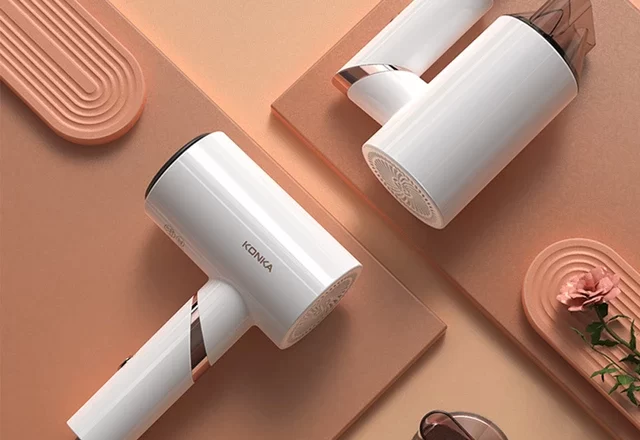Introduction:
Hair dryers are essential tools in our daily hair care routine, enabling efficient drying and styling. But have you ever wondered how hair dryers work? In this article, we will delve into the science behind hair dryers, exploring their components, functions, and the process by which they dry our hair. By examining the heating elements, airflow, and technology utilized in hair dryers, we can gain a comprehensive understanding of their functionality.
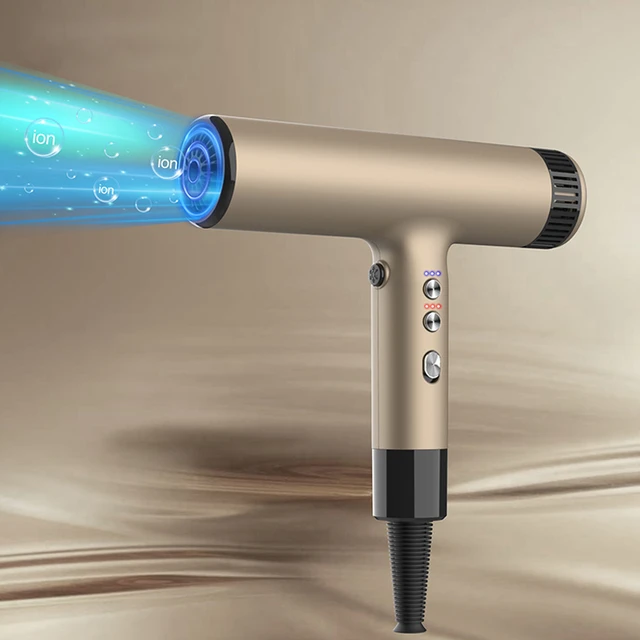
How do hair dryers work?
The Heating Element:
The heating element is the heart of a hair dryer, responsible for generating the hot air that dries the hair. It consists of a coil or wire made from materials such as nichrome or ceramic. When the hair dryer is turned on, an electric current passes through the heating element, causing it to heat up.
The Fan:
The fan in a hair dryer is responsible for creating the airflow that propels the heated air towards the hair. It is typically driven by a small electric motor located inside the hair dryer’s body. As the motor spins, it rotates the fan blades, drawing in cool air from the back of the hair dryer and pushing it through the heating element.
Airflow and Temperature Control:
Hair dryers typically have different heat and speed settings that allow users to control the airflow and temperature.
Convective Heat Transfer:
The primary mechanism by which hair dryers dry the hair is through convective heat transfer. As the heating element generates heat, the air surrounding it becomes hot. This hot air is then blown onto the wet hair, transferring heat energy from the air to the hair strands.
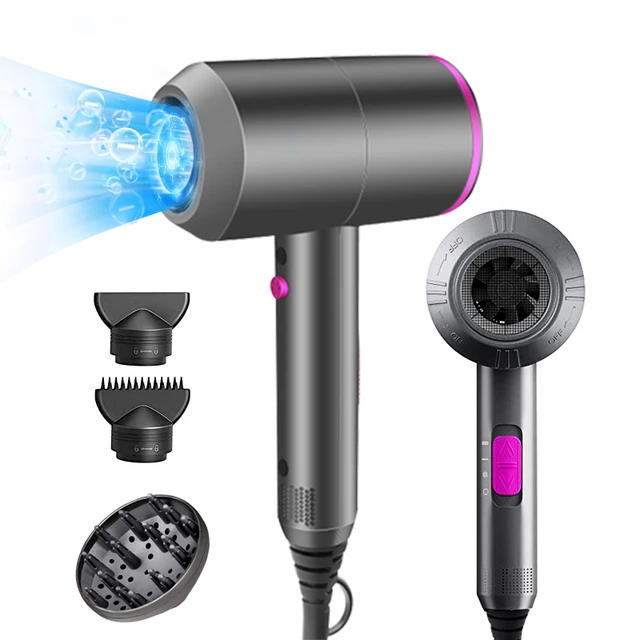
Evaporative Cooling:
When wet hair is exposed to hot air, the water molecules on the hair surface start to evaporate. Evaporation is a cooling process that draws heat away from the hair, resulting in a decrease in temperature. This evaporation helps to dry the hair by removing moisture and speeding up the drying process.
Ionic Technology:
Many modern hair dryers incorporate ionic technology, which emits negative ions into the airflow. These negative ions interact with the water molecules on the hair surface, causing them to break down into smaller droplets. This not only reduces drying time but also helps to seal the hair cuticles, resulting in smoother and shinier hair.
Ceramic and Tourmaline Materials:
Some hair dryers utilize ceramic or tourmaline materials in their components. Ceramic materials distribute heat evenly, preventing hot spots that can damage the hair. It emits negative ions when heated, enhancing the ionic effect and further reducing frizz and static.
Diffusers and Nozzles:
Hair dryers often come with attachments such as diffusers and nozzles. Diffusers are designed to distribute the airflow over a larger area, minimizing frizz and enhancing the natural texture of wavy or curly hair. Nozzles, on the other hand, concentrate the airflow, allowing for more precise styling and smoothing.
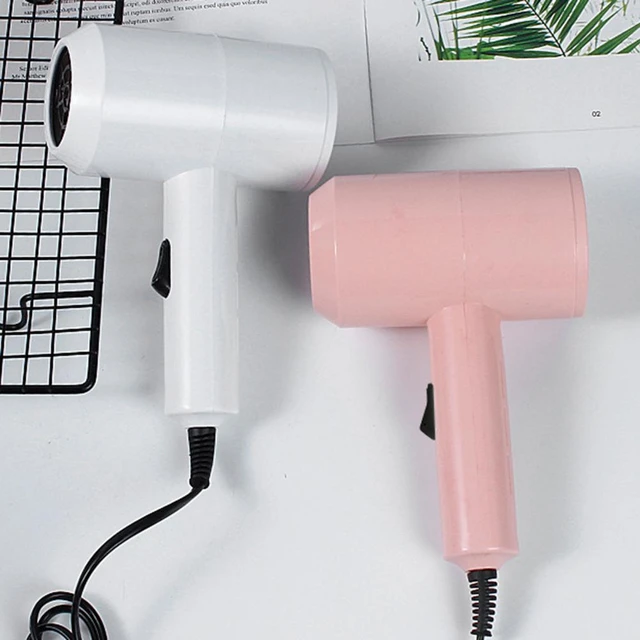
Safety Features:
To ensure user safety, hair dryers are equipped with various safety features. These may include overheating protection, which automatically shuts off the hair dryer if it gets too hot, and ground fault circuit interrupters (GFCI), which protect against electrical shocks by cutting off the power supply in the event of a fault.
Care and Maintenance:
Proper care and maintenance of a hair dryer are important to ensure its longevity and optimal performance. Regular cleaning of the air intake vents and the removal of any accumulated debris is essential to prevent overheating and maintain airflow efficiency. Following the manufacturer’s instructions for maintenance and storage will help prolong the life of the hair dryer.
Hair Dryer Techniques and Tips:
In addition to understanding how hair dryers work, it is important to know some techniques and tips for using them effectively:
a. Start with Towel-Dried Hair: Before using a hair dryer, it is recommended to towel dry your hair to remove excess moisture. This will reduce the overall drying time and minimize potential heat damage.
b. Use Heat Protectant: Applying a heat protectant spray or serum to your hair before using a hair dryer can help minimize damage caused by heat exposure. These products create a barrier between the hair and the hot air, reducing the risk of dryness and breakage.
c. Maintain a Safe Distance: Hold the hair dryer at a safe distance from your hair to avoid excessive heat. Keeping it about 6-8 inches away from your hair ensures even heat distribution and helps prevent overheating or burning.
d. Use a Lower Heat Setting: If your hair dryer has adjustable heat settings, start with a lower heat setting and gradually increase it if needed. High heat can be damaging, especially for fine or delicate hair. Finishing off with a cool shot can help set the style and add shine.
e. Move the Hair Dryer Continuously: To avoid overheating certain areas of your hair, keep the hair dryer moving continuously. This ensures even drying and minimizes the risk of damage from excessive heat in one spot.
f. Use a Diffuser for Curly Hair: If you have curly hair, using a diffuser attachment on your hair dryer can help enhance and define your curls while reducing frizz. The diffuser spreads the airflow over a larger area, preserving the natural texture of your curls.
g. Finish with a Blast of Cool Air: After styling or drying your hair, finish with a cool shot of air. This helps to lock in the style, close the hair cuticles, and add shine. Cool air also provides a refreshing sensation to the scalp.
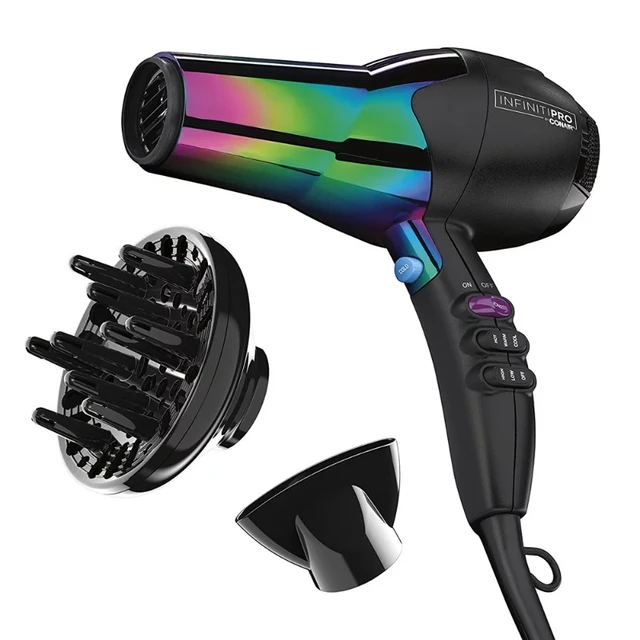
Considerations for Different Hair Types:
Different hair types may require different approaches when using a hair dryer. Here are a few considerations based on hair type:
a. Fine Hair: Fine hair is more prone to heat damage, so it is important to use lower heat settings and quick bursts of heat rather than prolonged exposure. Using a concentrator nozzle can help direct the airflow and add volume.
b. Thick or Coarse Hair: For thick or coarse hair, higher heat settings may be needed to effectively dry the hair. However, be cautious not to use excessive heat, and always use a heat protectant to minimize damage.
c. Curly Hair: Curly hair tends to be more prone to frizz. Using a diffuser attachment on a low heat setting can help enhance and define the curls without disrupting their natural pattern.
d. Damaged or Chemically Treated Hair: If you have damaged or chemically treated hair, it is important to be extra cautious with heat exposure. Using a lower heat setting and applying a leave-in conditioner or heat protectant can help protect and nourish the hair while drying.
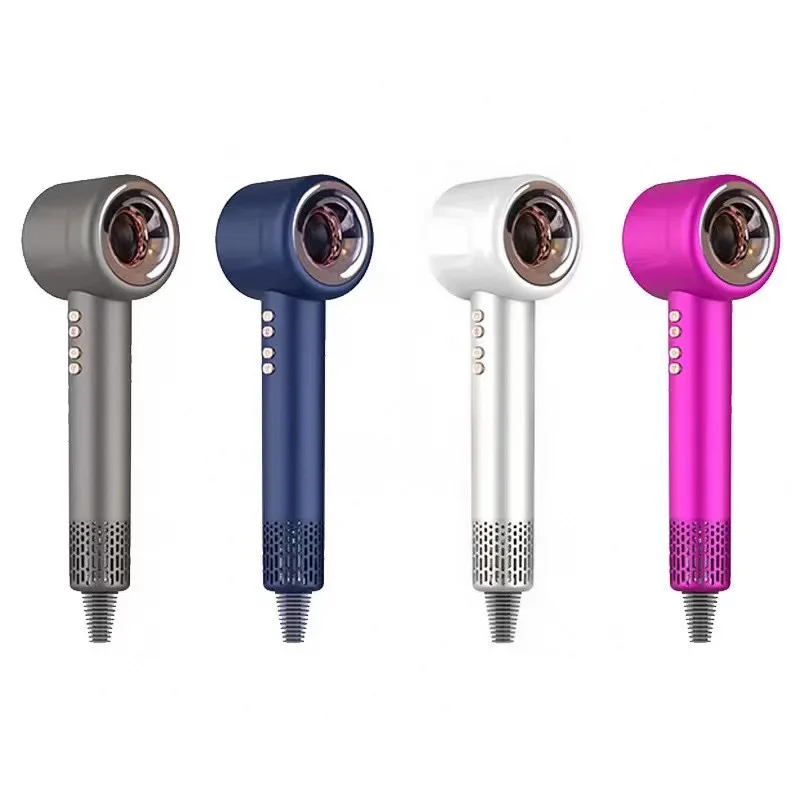
Conclusion:
Hair dryers utilize a combination of heating elements, fans, and technology to dry and style our hair effectively. By generating hot air and propelling it onto the wet hair, hair dryers expedite the evaporation process, allowing for faster drying times. The introduction of ionic technology, ceramic or tourmaline materials, and various attachments like diffusers and nozzles further enhance the drying and styling capabilities of hair dryers.
Understanding the various components and mechanisms of hair dryers helps us appreciate their functionality and make informed choices when selecting the right one for our hair needs. By following proper care and maintenance practices, we can ensure the longevity and optimal performance of our hair dryers, making them reliable companions in our everyday hair care routine.

